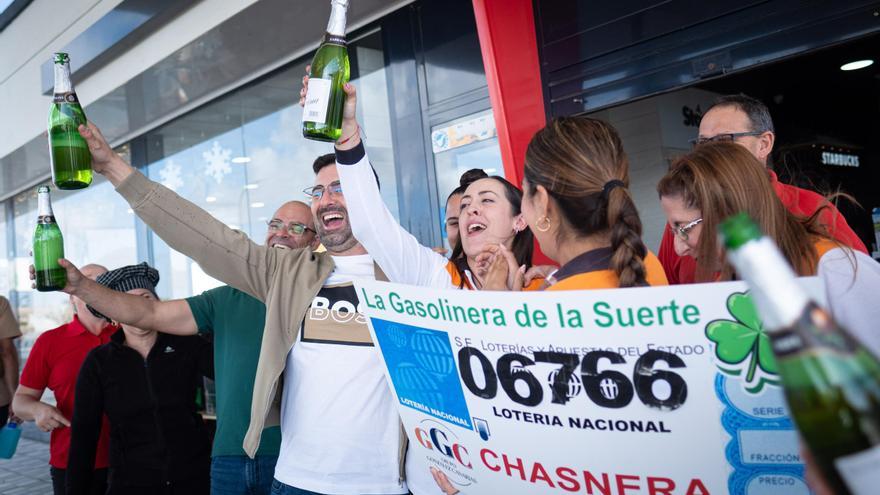
The lucky number 06766 has been awarded the third Children’s Lottery prize for 2025 in the Canary Islands. This winning number carries a prize of 750,000 euros per series and 75,000 euros per tenth. At 11:19 AM Canary time, the children from the San Ildefonso school sang this winning number live in the State Lottery and Betting Draw Room, where the Christmas Draw takes place, which can be viewed on THE PROVINCE. Check here to see if any of your tenths were winners.
In Gran Canaria, the tickets were sold at The Watchtower in Saint Brigid in Goro-Telde- and at The Haystack in the town of Arguineguín, located in Mogán. In Tenerife, it was sold at The Slope -San Cristóbal de La Laguna-, Los Realejos, and The Chasnera. It was also available in Holy Cross of The Palm.
In the Canary Islands, the average expenditure per citizen for purchasing tickets for this draw was 13.38 euros. According to figures from the State Lottery and Betting Society (SELAE), total sales expected in the community are projected to reach 29.4 million euros, further solidifying the engagement of island residents in this annual event.
Children’s Lottery
The extraordinary draw of ‘The Child’, taking place this Monday, Three Kings’ Day, is the second most significant event of the National Lottery, distributing an impressive 770 million euros, with a first prize of two million per series (200,000 euros per tenth).
This draw’s second prize will grant 750,000 euros per series (75,000 euros per tenth), while the third prize is worth 250,000 euros per series (25,000 euros per tenth).
The overall total prize pool amounts to 1.1 billion euros, with 70% being distributed as prizes.
‘The Child’ will commence at 12 noon in the State Lottery and Betting drawing room and will be conducted using the traditional multiple drum system.
In contrast to the Christmas raffle, this draw does not generate as much anticipation since it follows a pre-determined format lasting approximately half an hour.
This year, recorded sales totalled 874,231,600 euros, equating to an average of 18.20 euros per inhabitant, a figure significantly surpassed by Asturias (30.20 euros), Castilla y León (28.89 euros), La Rioja (26.01 euros), Valencian Community (25.17 euros), and Basque Country (23.22 euros).
Notably, the average amount spent this year (18.20 euros) is slightly above last year’s figure of 17.97 euros.
Conversely, the regions with the least ticket purchases are the autonomous cities of Ceuta (3.53 euros) and Melilla (5.32 euros), followed by the Balearic Islands (9.59 euros), Catalonia (13.02 euros), Navarre (13.23 euros), and Canary Islands (13.38 euros).
However, final sales figures will only be available shortly before the draw begins, once the administrations report the total tenths sold and those returned to the state company.
The zero has appeared most frequently as the final digit of the first prize, occurring 22 times, followed by 7 (14 times), 4 (13 times), 9 (13 times), 5 (12 times), 2 (11 times), and 6 (10 times).
First established in 1941, this draw was transformed into an extraordinary raffle in the following year due to its successful reception.
















